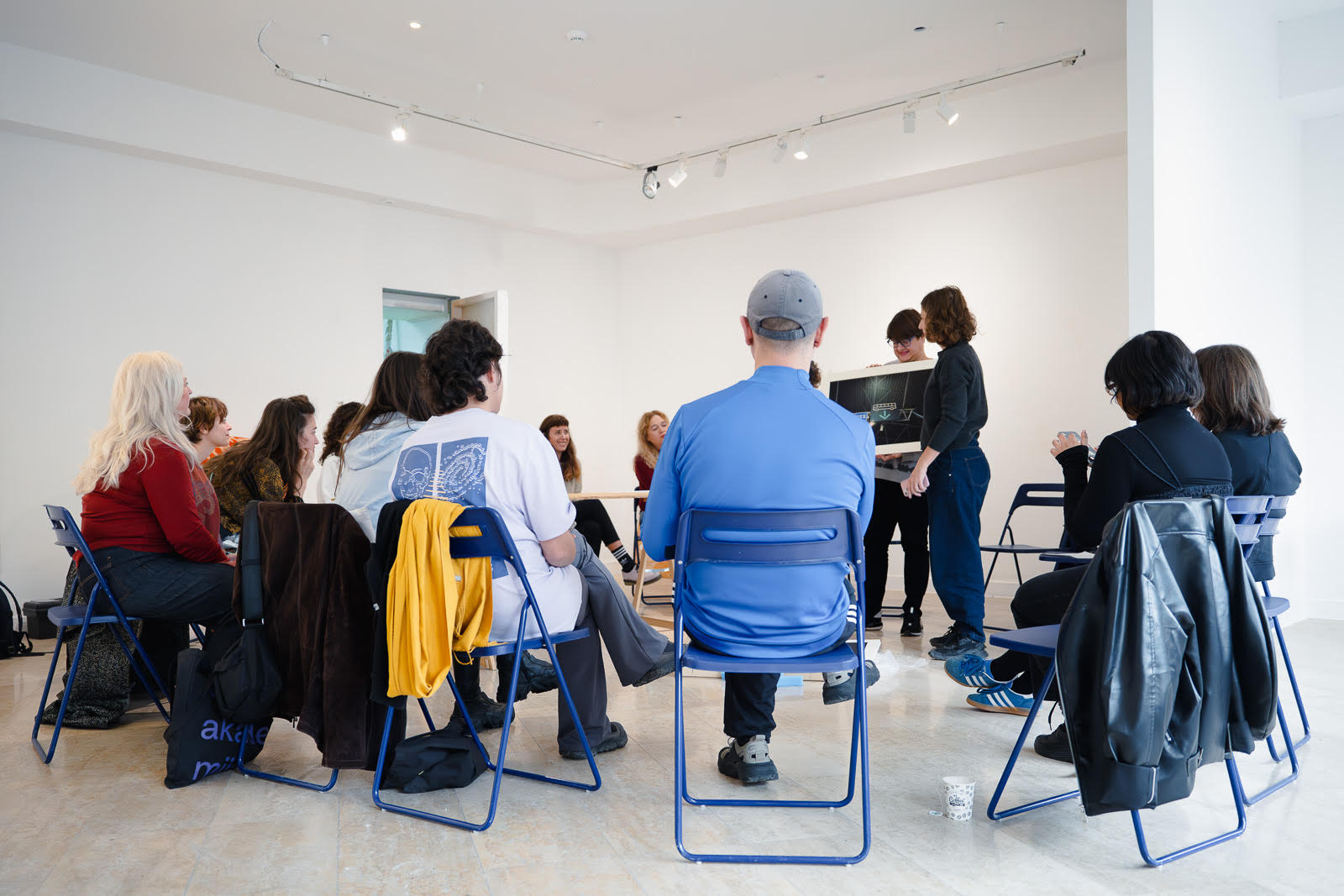Please introduce yourself, describe what your artistic practice is focused on at the moment.

Born in Ahwaz, in a steel factory residential complex, I once studied engineering but held onto music and rhythm to break from the positivism around the reproduction of societal, cultural, and financial capital, at least within dream-like episodes. I am currently focusing on the politics of over/non/under-representation imbued in public space constructions, the discourse around the preservation/overwriting/abolishing of the colonial and centrist edifices that perpetuate the role-allocation of superior/inferior, based on the proximity to the idealized singular referent - we1.
In order to oppose a genre-specific over-representation of Man-as-Human, I am situating this question in the context of my immediate surrounding, to put this into practice, and to also deal with the particular next to the epistemological underpinning. For instance, I am co-initiating collective settings in which the racist mosaic mural in Bremen’s central station could be put up for a new proposal in which one would overwrite and suggest new imagery that shares ecumenical, hybrid, and non-hierarchical views on the notion of humanity 2.
What are your real and desired conditions for art production?

Recently I have been thinking a lot about how to redeem time and space both, as elements under the capitalist brute-force organization. How to reproduce care outside the confines of institutionalized care. Art production is reliant on access to storage, space to share, time to reflect, and a community that offers intellectual, mental, and material support among other things. A desired condition would be one in which these requirements are not organized around the crux of efficiency and capital accumulation. Then self-organized, artist-led, non-profit, community-based, decolonial, queer-feminist, and transnational spaces that allow horizontal coalition-making are some of the tractions that stand in the way of the reproduction of the territorializing, centralized, nationalist, eco-fascist, mono-humanist, hierarchical status quo.
Though my concern is still how to deal with the large-scale crises that require a form of reorganization from below, yet capable of taking actions that slow down the climate catastrophe or other planetary matters like the pandemic. How to speculate and practice bottom-up economies that are not in the service of the few but care for communal urgencies, and by communal I mean the commons pertaining to planetary co-existence, capable of caring that extends to (non-)human life.
What are your experiences of collaborative art and educational practices so far?
One experience was the Home Workspace program that took place in Beirut (2018-2019), which could be both seen as an educational practice and a forum to form collaboration and friendship among fellows. But more than anything else, the possibility of being in constant conversation with each other’s practices, critical views and struggles is what made it intensive, intimate and transformative.
After my return to Bremen, I co-initiated Circa 106 collaborative one-month residencies that were never granted to one individual but always to a group of two or three artists who did not work together prior to that, so as to initiate collaboration for the first time as a recipe for horizontal coalition-making. Or amidst the pandemic, I co-facilitated an online network of care and exchange which has resulted in a reconfiguration of thought as a communal act, an online publication of writings shared between five artists inter-locally over two weeks.
I have also been a member of Zefak, together with Zainab Haidary and Elard Lukaczik, a collective that commits itself to the idea of sharing resources and knowledge as opposed to taking ownership over institutional privilege. The collective is (non-)studio and Bremen-based and has been creating space, namely, Future Archives to provoke conversations on topics such as hard coal-mining pits/fracking, as quack ensuing/troubleshooting extractivist outcomes/methods in Germany have been/are/will be capitalizing upon the contingencies of eco-social disasters thrown into prescribed futures.
How do these times of economic, social and ecological crises affect your art practice?
It is the condition of precarity that becomes normalized and the collectivizing methods are not merely a counter-move against the individual careerist mode, but also a necessary condition under which a different relationship towards the economy, sociability, and climate justice is attainable. Likewise, I invested myself in the past three years in that kind of practice which is not only centered around organizing events but maintaining platforms like project space or library that could continue existing beyond one's individual participation timespan. Spaces that challenge the discursive limit of the art institution in Germany and provide a critical space for the international/transnational community to discuss their views, organize events, and have a space to come together and further mobilize themselves.
In my last work Toppled from the Horizontal Axis, I borrowed constituents of my installation and mediated their new condition by building conjunctions that do not harm or cause any deformities. Temporarily I took custody of them (fragments of the former central bank building) and showed them next to my film, and later I returned those fragments to the association which collects and re-sells construction components, and as a result, this work cannot be shown again in its previous shape. I was using speculative toppling as that which defies the perpetual mode that the monument of a former centralized (financial) institution is manifesting. To make ceremonies of toppling that decentralize and redistribute its sovereignty, the circulation of material.
Name about 10 words/associations/notions that first come to your mind when you think of engaged eco-social participatory practices.
Future Archives, Lumbung, Bauteilboerse Bremen, stateless societies, transnational solidarity, Where the River resides, The Society of the Friends of the Virus, Jin Jiyan Azadî, listening from below, local councils, participatory witnessing, storytelling.
1 Katherine Mckittrick, Sylvia Wynter, On being human as praxis. UNPARALLELED CATASTROPHE FOR OUR SPECIES?, 2-89;
2 Ibid
.jpg)


